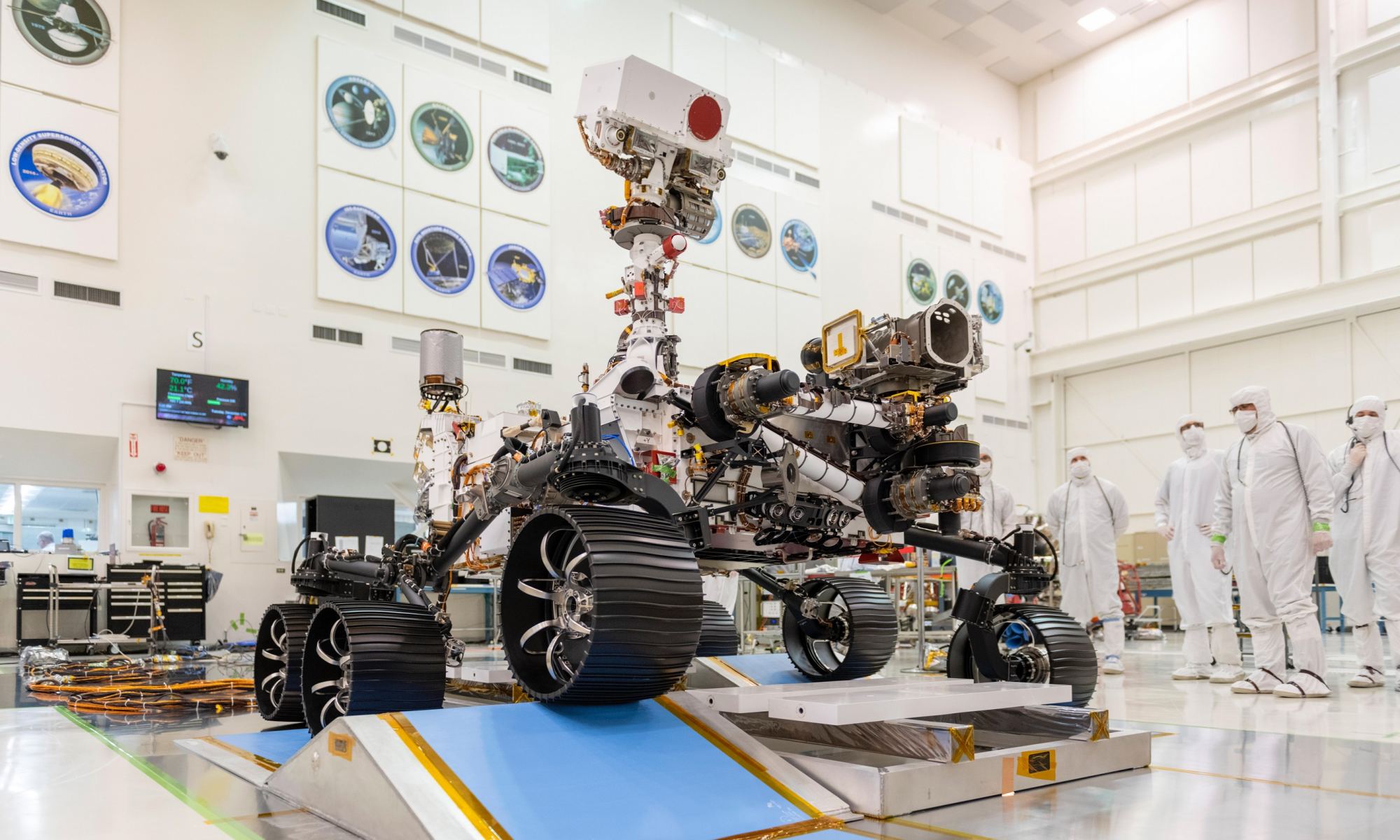I remember the Summer of 1997 when a shoebox-sized Mars rover literally broke the Internet.
Sojourner – the first rover we sent to another planet – had just landed on Mars in a giant space airbag bouncing along the surface to a safe stop. The Internet was new. And I was a young space enthusiast with a dial-up modem. For the first time, images from a space exploration mission were beamed to an audience that was connected online. Now we use the term “broke the Internet” as a hyperbolic phrase for various Internet phenomena, but interest in the Mars mission in 97 drove so many hits to NASA mirror servers around the world that global web traffic was disrupted. Patiently I watched as, line by line, orange sky to red stone, the first image posted by NASA loaded on my screen…it took about an hour. Each line resolved was like my own exploration of the planet. And finally, the landing site, in “real time”, was revealed to me and the entire world all at once. What would we discover together?

As our newest rover, Perseverance, launched into space this past July due to arrive on Mars in eight months , a narrator said the mission would search for signs of “ancient life on Mars.” For decades, even before Sojourner, we sent other missions to the Red Planet. Don’t they all look for life and, if so, shouldn’t we have found it by now? The answer is a solid…kind of. On Earth, it’s difficult to imagine NOT being able to find life. Life is almost everywhere on our planet and we’re finding it in more places we didn’t expect to – one of the reasons we hope we’ll find it on Mars. 56 missions have been sent to Mars. Of them, 26 are deemed successful. But not all were searching for life. At least not directly. They were gathering information about Mars itself so that the next time we sent a mission hunting for life, we knew exactly where to look. We need that information because we tried looking for life on Mars once before, and the results were…well…inconclusive.
Extant (current) Life on Mars:
The NASA Viking 1 probe landed on Mars July 20th, 1976 and beamed back the first images of Mars taken from the surface.
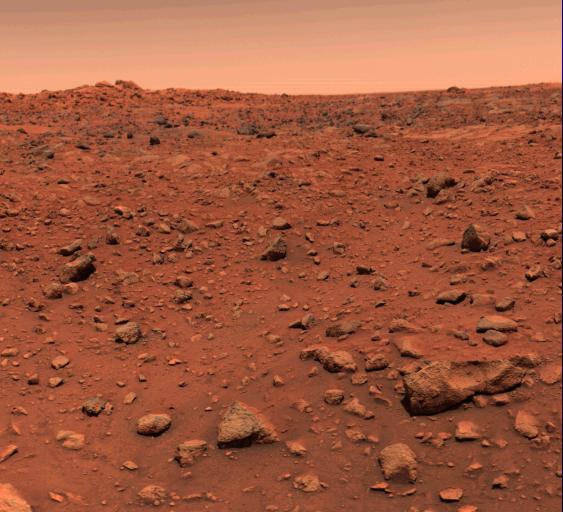
Viking carried three experiments to determine if microorganisms were alive in Martian soil by looking for signs of metabolic and photosynthetic activity. One of these tests, the labeled release test, “labels” carbon atoms with a radioactive tag. The tag allows us to track the path of the carbon to see if it has been metabolized. It’s kind of like in The Dark Knight when Batman grumbles about using “lightly irradiated bills” to track thefts by the Joker from banks. Labeled release showed a positive result.
Debate ensued among scientists suggesting the positive result was false – created by chemical processes in the soil rather than biological. The test’s designer, Gilbert Levin, still believes that this test result is a valid detection of microbial metabolism on Mars, but much of the scientific community is divided. At best the result is now considered “inconclusive.” Viking 2 had similar results.
And that was it. Viking 1 and 2 were the only missions we’ve sent to look for alive living life on Mars. What we needed was more context. Viking was basically a shot in the dark. How could we be more certain of similar test results this in the future? The answer wasn’t to just look for life ON Mars…but to study the Life OF Mars.
Life on of Mars:
Mars was to us, on the surface, a barren wasteland. But what about beneath the surface – not only of rock and sand but of time itself? Did Mars have a more habitable ancient past and how long did that habitability last? Was our neighbor like us? Was it wetter? Did it have the ingredients for life like Earth? Was Mars more geologically active than the frozen world we see now?
Atmosphere – a Warmer Planet:
Breathing is great, but our atmosphere also keeps the planet warm and acts as a protection against harmful ultraviolet radiation – basically it serves as our diplomatic relationship with the Sun. MAVEN (Mars Atmosphere and Volatile Evolution Spacecraft) arrived in orbit of Mars Sep 22, 2014 to learn what happened to Mars’ atmosphere. Given evidence of ancient waterflows on Mars, we think a major trigger of Mars’ global climate change was a loss of atmosphere. While Earth maintained its atmosphere through the eons, Mars’ evaporated into space resulting in a thin layer of carbon dioxide gas 100 times less dense than Earth’s air. MAVEN confirmed that Mars’ atmosphere is literally being blown away by the Sun. It’s possible this evaporation is due to Mars’ weak magnetic field as Earth’s magnetic field protects our atmosphere from solar radiation like a giant shield surrounding our planet. Given the rate of loss, we can infer that if Mars did have a warmer wetter past, that past radically changed about 3-ish billion years ago. BUT that means there was a billion years for life to evolve first – about how long life needed to appear on our own world. So, while not walking/talking life, there is a chance that at least simple microbial life had time to evolve on Mars.

Seismic Activity – a Planetary Time Capsule
On Nov 26, 2018, the Mars Interior Exploration using Seismic Investigations (InSight) probe landed on Mars to give us a look INSIDE of the planet using earthquakes…err…marsquakes. Mars is not as seismically active as Earth meaning that much of its early history is preserved in rocks and minerals that go undisturbed. Unlike Earth’s shifting tectonic plates and volcanic activity, Mars’ has no plate tectonics and likely little to no volcanic activity which essentially freezes the planet in time. This “frozen” planet allows us to understand the formation of rocky planets in the solar system and more about Mars’ own history. Though not very seismically active, what little seismic activity there is on Mars creates waves that travel through the planet that InSight is presently using to peer into Mars like a planetary ultrasound.
Water – A Wetter Planet
From the Surface:
If there is one secret sauce to life as we know it, it’s water. Water is amazing. It delivers nutrients, carries away waste, and protects from harmful radiation. If we know where Mars had or still has water that is a good place to search for life. As early as the Viking missions, we discovered some evidence of water on Mars. Subsequent missions added to the evidence. The Phoenix lander, which arrived May 25, 2008 confirmed the presence of water-ice (ice made of water rather than other things) for the first time. Phoenix showed the polar region surrounding the lander may have been wet as late as 600 million years ago. Phoenix also found that the drying of Mars left a bactericidal perchlorate in Martian surface soil. This means extant life of Mars might be impossible, at least at the surface, casting further doubt on the Viking results. The twin landers, Spirit and Opportunity which arrived January 4th and 20th in 2004 respectively, were a huge upgrade from the tiny Sojourner. Solar powered, and weighing in at just under 200kg, both rovers were geologists studying rocks for clues of a watery past on Mars. Spirit found basalt rocks – rocks enriched by elements common to water solutions. One of Spirit’s greatest discoveries – silica formed by hot springs – was found serendipitously when Spirit jammed one of its wheels. The dragging wheel scraped across the ground revealing the silica deposit which is one of the strongest pieces of evidence of a wetter Martian past.
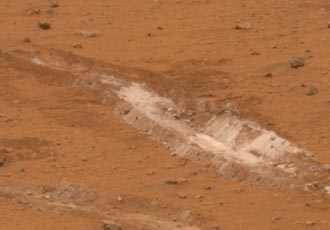
Opportunity maintains the record for longest continually operating mission on the Martian surface at over 5300 Sols (a Martian day of 24 hours 39 minutes). It also holds the driving distance record of any rover at over 45km! Compare that to Sojourner’s 100m! Opportunity found hematite deposits which form in water as well as gypsum veins thought to be created by subterranean water flows. Perhaps Opportunity’s greatest discovery was clay deposits found in Endeavor Crater. The presence of clay suggests that not only did pools of water exist on Mars, but that some water was pH neutral rather than acidic or alkaline; favorable conditions for microbial life. Interest in Opportunity grew globally when the rover was caught in a planet-wide Martian dust storm. Contact with Opportunity was lost on June 10th, 2018. Telemetry from the rover suggested that dust from the storm prevented the rover from recharging its batteries which journalist Jacob Margolis interpreted as Opportunity saying, “My Battery is Low and it’s getting dark, ” which became an Internet meme in support of the lost rover hero on Mars.

The Curiosity rover is now the only operational rover on Mars. Landing on Aug 6th 2012 at the Gale Crater; an impact crater thought to be between 2.5 to 3.8 billion years old. The crater’s depth means it may have held water allowing Curiosity access to billions of years of possible sedimentation and erosion history. Its two-year mission has now lasted over 2800 Sols. In addition to a geology mission like that of Spirit and Opportunity, Curiosity is a chemistry lab looking for signs of organic elements and compounds – the necessary building blocks of life. Curiosity discovered that the Gale crater likely contained an non-acid low salt freshwater lake. On June 7th 2018, NASA announced that Curiosity discovered organic carbon concentrations 100 times more abundant that previously discovered on Mars. So, it seems Mars not only had a climate more suited to life in the past, it also had the raw ingredients and energy necessary for life to evolve as well.
From Orbit:
Evidence of water on Mars has also been noted from the skies. Mars Odyssey (named after the book 2001: A Space Odyssey since it arrived October 2001) holds the record for the longest operational probe mission to orbit a planet. Odyssey detected evidence of water near both equatorial and polar regions of Mars as early as 2002. The evidence collected by Odyssey was used to design the Phoenix mission to confirm Odyssey’s findings. The European Space Agency Mars Express Orbiter detected the first evidence of LIQUID water on Mars beneath Mars’ Southern Polar ice cap. Lake Vostok, on Earth, is an analogous subglacial lake beneath Earth’s Antarctic ice sheets which is thought to harbor life (though difficult to reach even on Earth). Finally, The Mars Reconnaissance Orbiter (MRO) reached Mars March 10th, 2006 to study seasonal variations on Mars and look for signs of water. Serving as the highest speed communication link for ground-based missions, it has sent more data to Earth than any other orbiter. It transmits at 6Mbits/second…far faster than my home Internet connection in the 90’s. MRO helped map out ice in Mars polar caps and revealed that meteor impacts on Mars excavated sub-surface water ice. MRO recently marked its 15th anniversary and, to celebrate, NASA released a curated selection of MRO’s breathtaking images of Mars. MRO’s cameras also helped select areas for new lander missions on Mars – most notably the landing spot for Perseverance at a location called the Jezero Crater.

Perseverance Searches for Ancient Life on Mars
Mining the Past:
Studying Mars’ ancient past, narrated by the story tellers we have in orbit and on the surface, has helped informed where our next attempts to find life should be. Jezero Crater was likely part of an ancient river basin – the word Jezero itself means “lake” in several Slavic languages. Near the edge of the 50km wide crater is a fan-delta with clay mineral deposits indicative of nutrient rich water sources. THIS is a good place to be looking for past life on Mars.
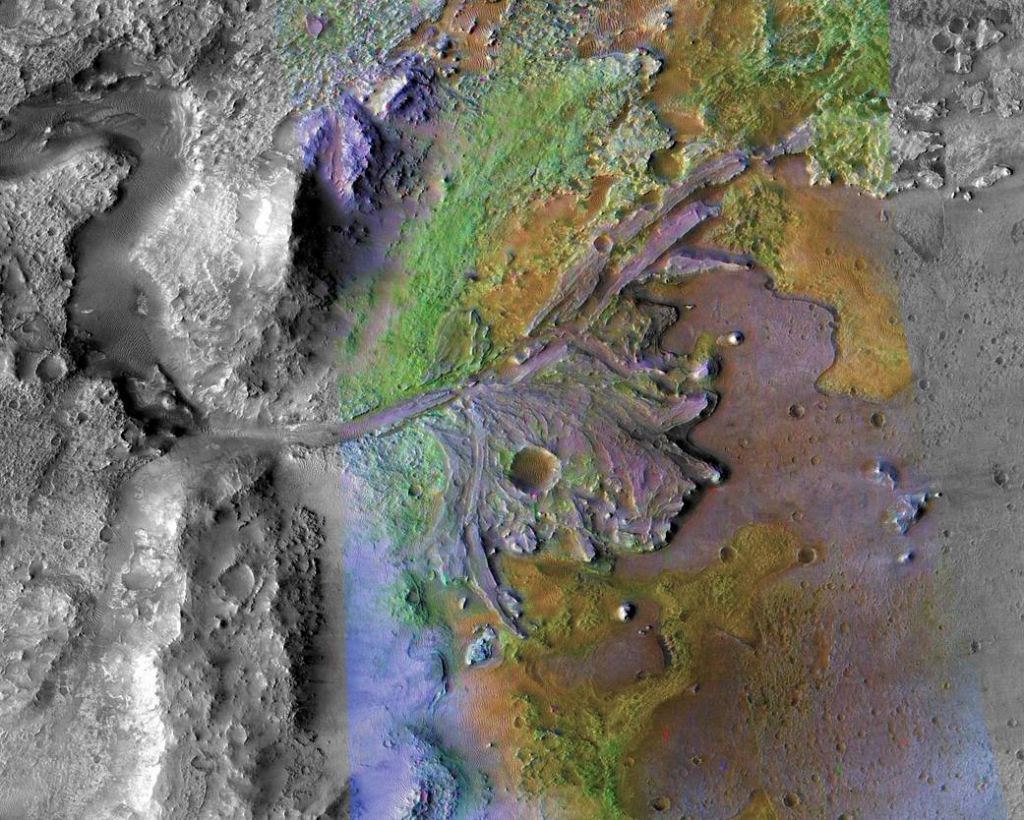
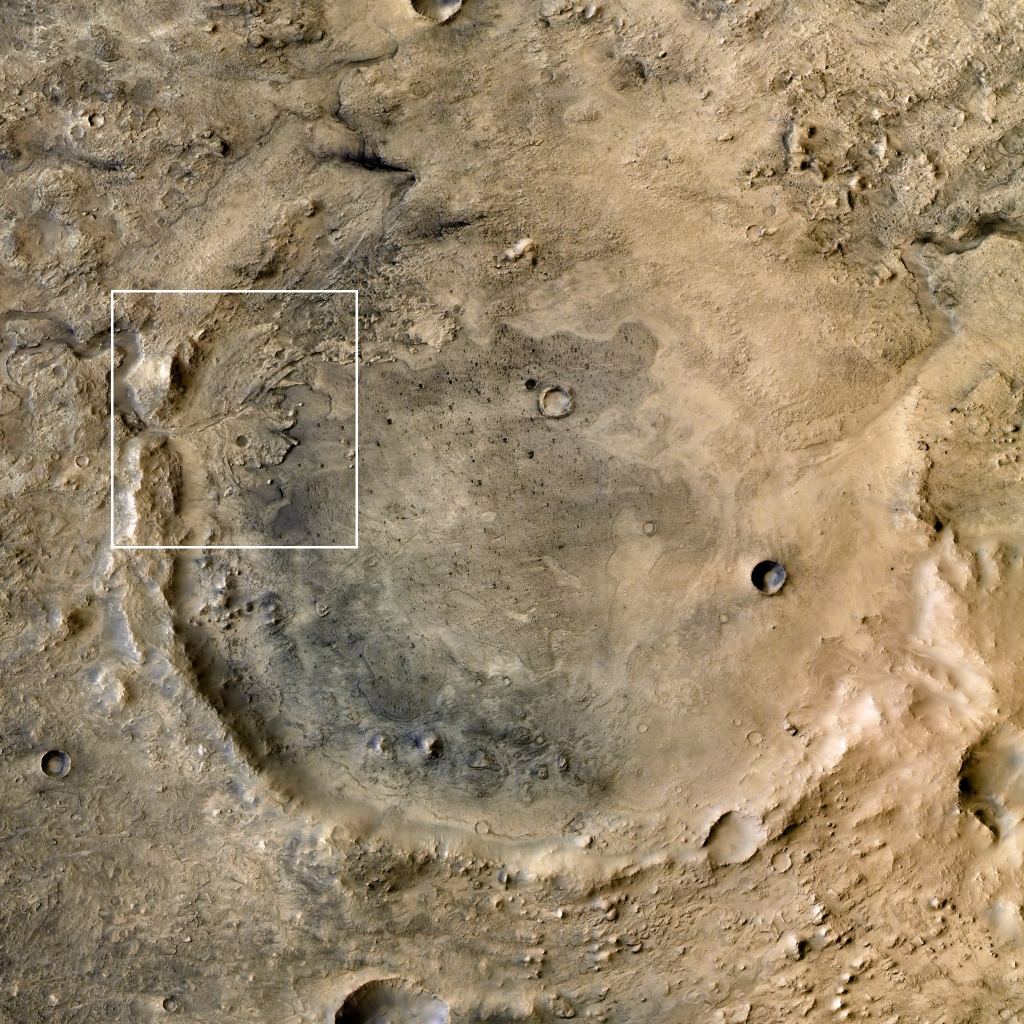
But why “past life”? We’ve learned Mars’ past was far more ideal for life. We also know that microbial life on the surface might be destroyed by perchlorates and ultraviolet radiation. The past likely holds much richer evidence of life on Mars, so that’s the past Perseverance will explore. There could be microscopic fossils preserved in the soil. How can we find out for certain? Well, the best way is to actually bring the soil BACK to Earth.
Bringing Mars to Earth:
For some time now, NASA has discussed bringing Martian soil samples home. Perseverance is the first mission to attempt to do this. The rover has a sample storage container that will pack up to 43 core samples that a future mission will bring to Earth. Using a “fetch rover” that mission will collect the samples, drive them to a Mars Ascent Vehicle which will then launch them to an orbiting craft bound for Earth. Estimates for Perseverance sample returns are looking at the early 2030’s. You can accomplish a great deal by having robots on the surface of another world, but to have the soil samples in a lab on Earth, in your hands, allows you to do so much more science.
More Giant Leaps:
Perseverance is also helping us continue our steps out into the solar system. For decades, we’ve talked about taking humans to Mars. Perseverance features a device to sequester oxygen from Mars’ carbon dioxide atmosphere. The technology is a proof-of-concept for future colonies looking to create breathable atmosphere on Mars for a base using the oxygen that is already there. Furthermore, Perseverance is equipped with ground-penetrating radar; a technology which future colonists may use to find liquid water.
Eyes in the Sky:
Percy won’t be exploring the Red Planet alone but with a flying sidekick named Ingenuity; a helicopter-done-probe…(helidrobe?) Ingenuity will be the first flying vehicle to ever operate on another planet. It’s not equipped with scientific instruments as Perseverance is, but rather is a flying camera to scout places of interest. Like many other probes operating on the surface of Mars, Ingenuity will be a solar powered vehicle. However, Perseverance itself will be nuclear powered running on a 5kg core of plutonium like Curiosity. The advantage is not worrying about your solar panels in a dust storm (RIP Opportunity).

The New Search for Life:
While Perseverance peers into ancient life on Mars, the search for extant life is still alive. The European Space Agency is presently working on the Rosalind Franklin rover, part of their ExoMars 2022 project that will search for life on Mars. Again, informed by our updated understanding of the planet, Rosalind will not be looking for life directly on the surface of Mars as Viking did, but BENEATH the surface. Estimates are that we need to dig at least two meters down out of reach of life-destroying perchlorates and intense ultraviolet radiation. Perseverance digs into the past, while Rosalind digs into the present. Both hold keys for future discovery.
Between these missions, there is a good chance that within the next fifteen years, we’ll have a clearer answer as to whether life exists or ever existed on our neighbor planet. Watching Mars appear line by line on my CompaQ desktop in 1997, I wondered even then what that would mean for me – or for us as a civilization. Back then, the whole world crashed the Internet in wonder. I believe wonder leads to hope. Wonder makes us press on – to learn – to grow – to persevere. Perseverance, as a virtue, is something we all need right now looking at our own planet and the challenges we face. As Alex Mather, 7th grader from Virginia who named the Perseverance rover said: “Curiosity, insight, spirit, opportunity. If you think about it, these names of past Mars rovers are all qualities we possess as humans. We’re always curious, and seek opportunity, we have the spirit and insight to explore the Moon, Mars and beyond. But if rovers are to be the qualities of us as a race, then we’ve missed the most important thing, Perseverance. We as humans evolved as creatures who have learned to adapt to any situation no matter how harsh. We are a species of explorers and we will meet many setbacks on the way to Mars, however, we will persevere. We, not as a nation, but as humans, will not give up. The human race will always persevere into the future.”
Perseverance is scheduled to arrive on Mars February 18, 2021. Let’s break the Internet.
More Reading (including a SETI live stream):
To learn more about Perseverance, sign up for this cool live event SETI (Search for Extraterrestrial Intelligence) is hosting this coming August 19th called “Perseverance: A Martian Rover to Find Life?”
And read all kinds of things about our history of Mars Exploration below:
The Day The Internet Stood Still – NASA https://www.nasa.gov/specials/pathfinder20/
Mars 2020 Website – http://mars.jpl.nasa.gov/mars2020/
Mars 2020 Name Competition Winning Essay Speech by Alex Mather – https://www.youtube.com/watch?v=R72nPGJe0Rk
Jazero Crater Landing Selection – https://www.nytimes.com/2018/11/19/science/nasa-mars-2020-rover.html
InSight Key Initial Discoveries Paper – https://eorder.sheridan.com/3_0/app/orders/9194/article.php
History of Martian Atmosphere – https://www.nasa.gov/press-release/nasa-mission-reveals-speed-of-solar-wind-stripping-martian-atmosphere
“Searching for Signs of Life on Mars” – ESA https://exploration.esa.int/web/mars/-/43608-life-on-mars
The “Methane Mystery” – ESA https://www.esa.int/Science_Exploration/Human_and_Robotic_Exploration/Exploration/ExoMars/The_methane_mystery
Spirit and Opportunity Mission Overview – https://mars.nasa.gov/mer/mission/overview/
Water and Gas loss to space by MAVEN – http://www.astrobio.net/also-in-news/nasas-maven-mission-observes-ups-downs-water-escape-mars/
Mars Express detects liquid water hidden under planet’s south pole – ESA http://www.esa.int/Science_Exploration/Space_Science/Mars_Express/Mars_Express_detects_liquid_water_hidden_under_planet_s_south_pole
Mars Express News Ground Water System http://www.esa.int/Science_Exploration/Space_Science/Mars_Express/First_evidence_of_planet-wide_groundwater_system_on_Mars
Life on Mars? Nat Geo: https://www.nationalgeographic.com/news/2012/4/120413-nasa-viking-program-mars-life-space-science/
Curiosity Finds Conditions Once Suited Life on Mars – https://mars.nasa.gov/news/1438/nasa-rover-finds-conditions-once-suited-for-ancient-life-on-mars/?site=msl
Tributes to Opportunity: – https://www.zmescience.com/space/tributes-opportunity-0423423/
Mars Compared to Earth Universe Today – https://www.universetoday.com/22603/mars-compared-to-earth/
The 5 Possibilities for Live on Mars – Stars with a Bang: https://www.forbes.com/sites/startswithabang/2020/08/04/the-5-possibilities-for-life-on-mars/#72cd03385387

